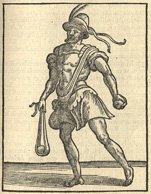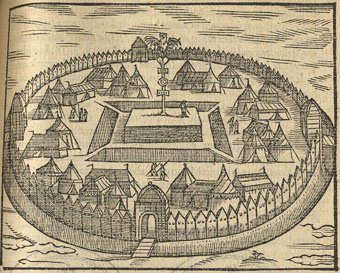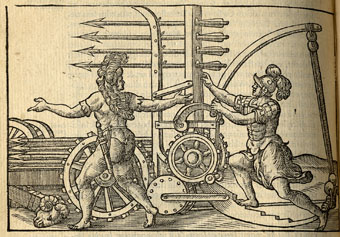This was originally published in May 2010 as part of our Item of the Month series.
What do a scorpion, a tortoise, a ram and a wild ass have in common?
Answer: They are all Roman siege engines, as described in Vegetius’ text, De Re Militari. A large siege engine designed to propel rocks towards an enemy was called an onager or wild ass, suggesting the kicking motion of a catapult-like machine; the frame supporting a battering ram was known as a tortoise, because the whole contraption resembled a tortoise’s head poking out of its shell; and the scorpion was a device for shooting darts.
Our item of the month for May is a Latin edition of Flavius Vegetius Renatus’ De Re Militari (Concerning Military Matters), printed in Antwerp in 1585. This edition supplements Vegetius’ original text, which dates from the 4th or 5th century, with a commentary from several later writers (Frontinus, Modius, Aelianus, Modestus and Polybius), edited by the scholar, Godescalcus Stewechius (1551-1586).

This particular copy is from the personal library of John Anderson (1726-1796), founder of Anderson’s Institution, the forerunner of the University of Strathclyde. Amongst his many activities, John Anderson wrote extensively on the art of war and had a special interest in improving the efficiency of cannons and artillery. In one of his manuscripts, Anderson quotes Vegetius’ remarks on recruitment and training and why farmers make better soldiers than city folk:
“Common people… from the country are fittest for War; for as they are brought up to Labour in the open Air, they seek not the Shade, and can bear the Heats of the Sun. They are strangers to Baths; and to the sweets of Life. Their Minds are simple. They are content with little. Their Limbs are hardened to every kind of Labour, having been accustomed to carry tools, to make Ditches and to carry Burdens, in the fields.” John Anderson, ‘Military Sketches' (ref: GB 249 OA/4/5).
Anderson also possessed a copy of an English translation of Vegetius (Clark, 1796), which he had clearly studied and valued as the pages bear his distinctive pencil cross markings and he had also made notes on the end paper.

The Antwerp edition of De Re Militari is divided into 4 books. Book 1 focuses on recruitment and training; book 2 on the ancient legion; book 3 on field strategy and tactics, and book 4 on siege and naval warfare. There are also several woodcut illustrations of the various techniques and machines referred to in the text.
The enduring maxim 'He who desires peace, let him prepare for war' (‘Qui desiderat pacem, praeparet bellum'), attributed to Vegetius, appears in the introduction to the section on field strategy and tactics.
The military tactics and strategies described by Vegetius were still being deployed on European battlefields during the Middle Ages. However, the invention of gunpowder in the 14th century rendered the Romans’ machinery and weapons largely obsolete, and torsion engines like catapults, mangonels, onagri, ‘scorpions’, crossbows and slings were supplanted by cannons and firearms.

As the only surviving military text from the Roman period, Vegetius’ work is unique, and constitutes an invaluable legacy. The Antwerp edition of De Re Militari offers a fascinating insight into Roman military apparatus, training, and warfare techniques, and evidently had pride of place in John Anderson’s personal collection.
Carol Stewart, Senior Library Assistant